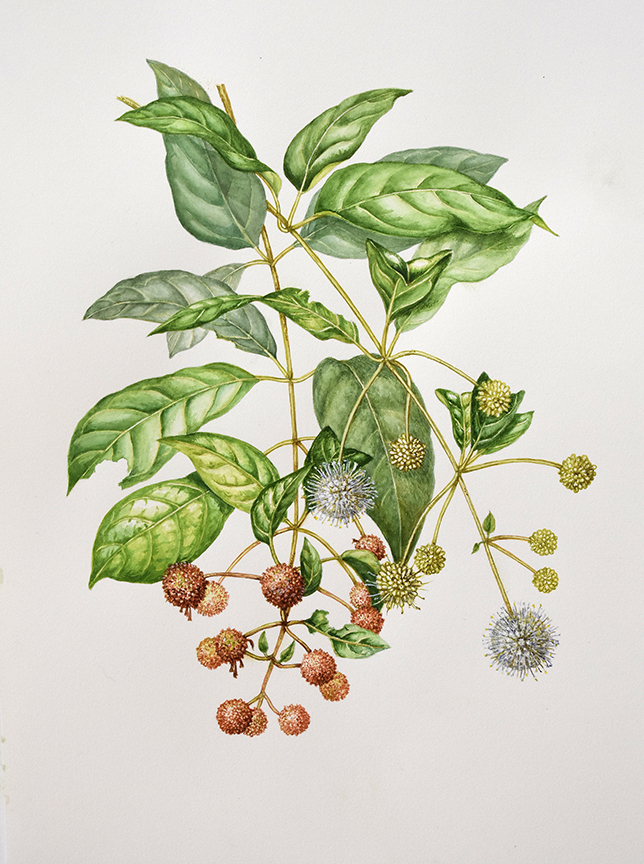 |
November colors in my back yard.
|
Many leaves have fallen, but there's still a lot of color in the woods in back of my house: the oaks have reached their peak. Soon my neighbor's farm buildings will become visible through the woods, after the leaves have come down.
On the east side of the house, the Japanese maples are still holding on to most of their leaves, despite heavy hoarfrost on several mornings. I've fenced off my Rhododendron, azaleas, and other young trees for winter protection from the marauding deer. I still have a couple of new plants--last minute purchases on sale--to get in the ground.
 |
East yard in mid-November
|
The ornamental kale looked particularly lovely with frost on its leaves. So did the bed on the west front by the garage.
 |
Morning frost on ornamental kale.
|
 |
Hoarfrost on the western front.
|
As the temperature begins to drop in earnest, and it becomes less comfortable being outside, it's time to finish my chores and put the garden to sleep. This week I harvested all the romaine lettuce except for two small heads, protected overnight by frost-proof cloth. All of the tender houseplants have been brought inside for the winter.
 |
Plants in the bathroom.
|
Meanwhile, one of my orchids around the bathtub is blooming once more, along with some African violets. I haven't been able to coax any flowers from the Cattleya mounted above yet, although it seems to be happy there. Perhaps a clip-on light would help?
Now that I'm spending more time indoors, I've been working on new project--a perpetual Nature Journal. Started last month, the idea is to do a few sketches every week on two pages of the journal on year one. Then, on subsequent years, add a few more sketches on those weeks until the journal is all filled up.
Some weeks I have interesting material to work with on hand, collected from my wanderings; other weeks, I struggle to find something of interest to bring home from my walks around the area. Here are some pages from my journal.
The small set of half-pans holding open some of the pages is brand-new set of some very expensive hand-made watercolor paints from Greenleaf and Blueberry, which I've been using on the journal, along with my Faber Castell watercolor pencils and waterbrush. I love this tiny new set--I can carry it in one pocket with the waterbrush and a 5" x 7" sketchpad when I go out on my walks to Blandy Farm or other places nearby, eliminating the need for a tote bag or backpack. Traveling light is essential!
 |
Plant material collection.
|
 |
Sunrise over our neighborhood.
|
The sunrise on a recent morning was spectacular--the sky was on fire, the mountains veiled in fog. Sailors take warning!
























































